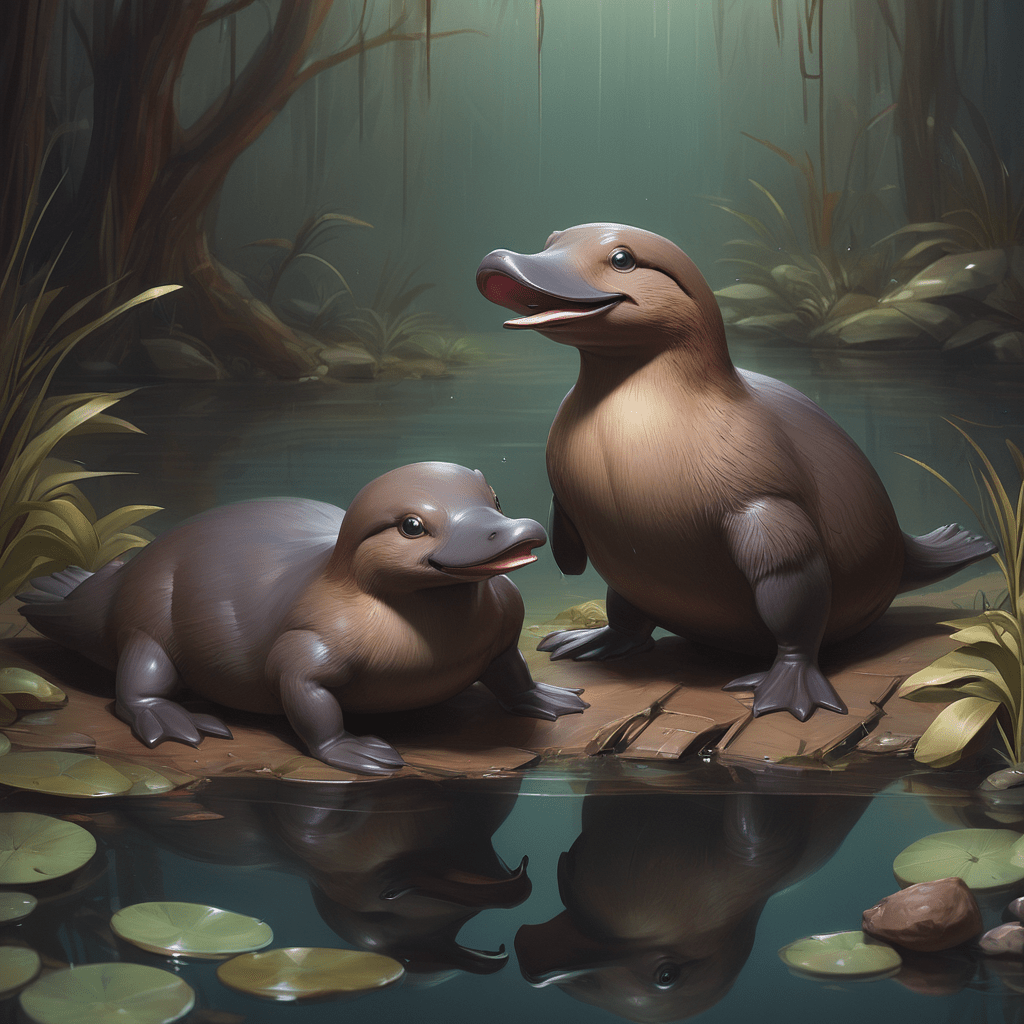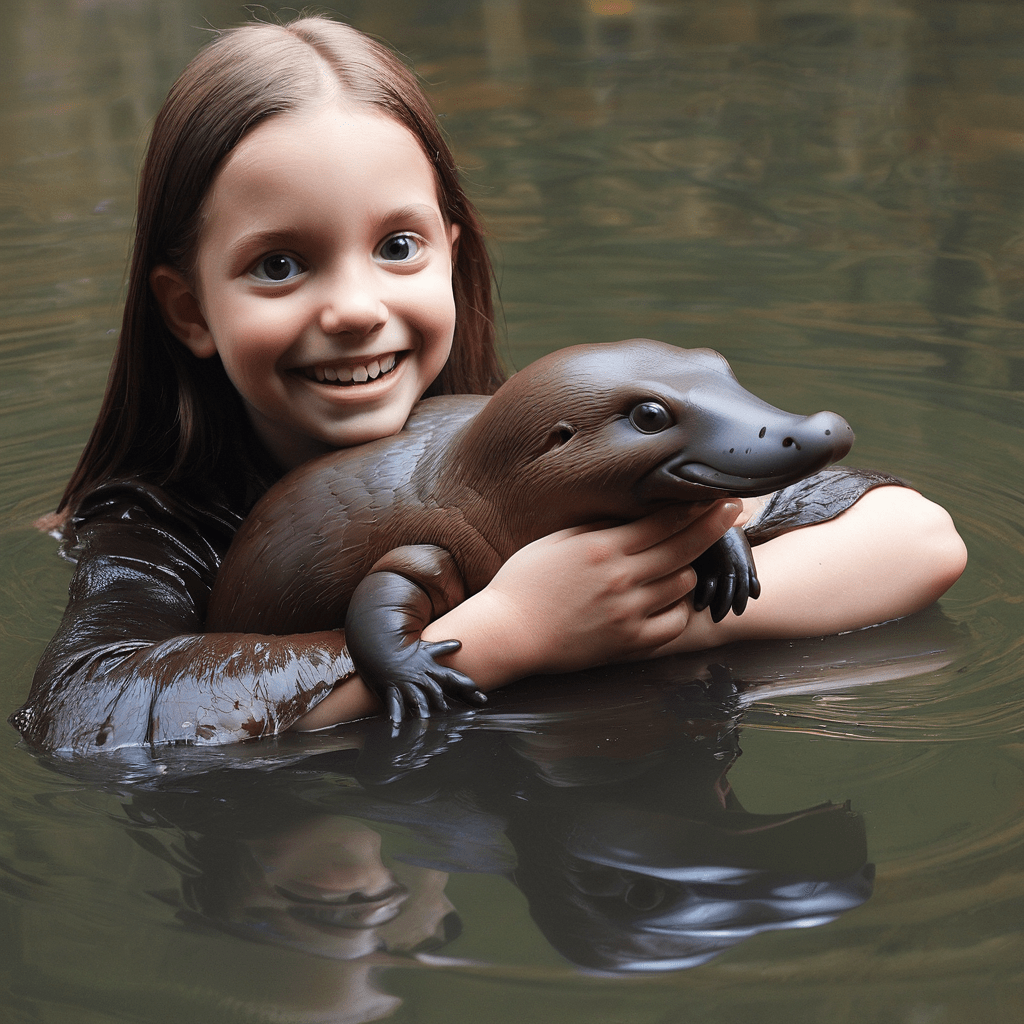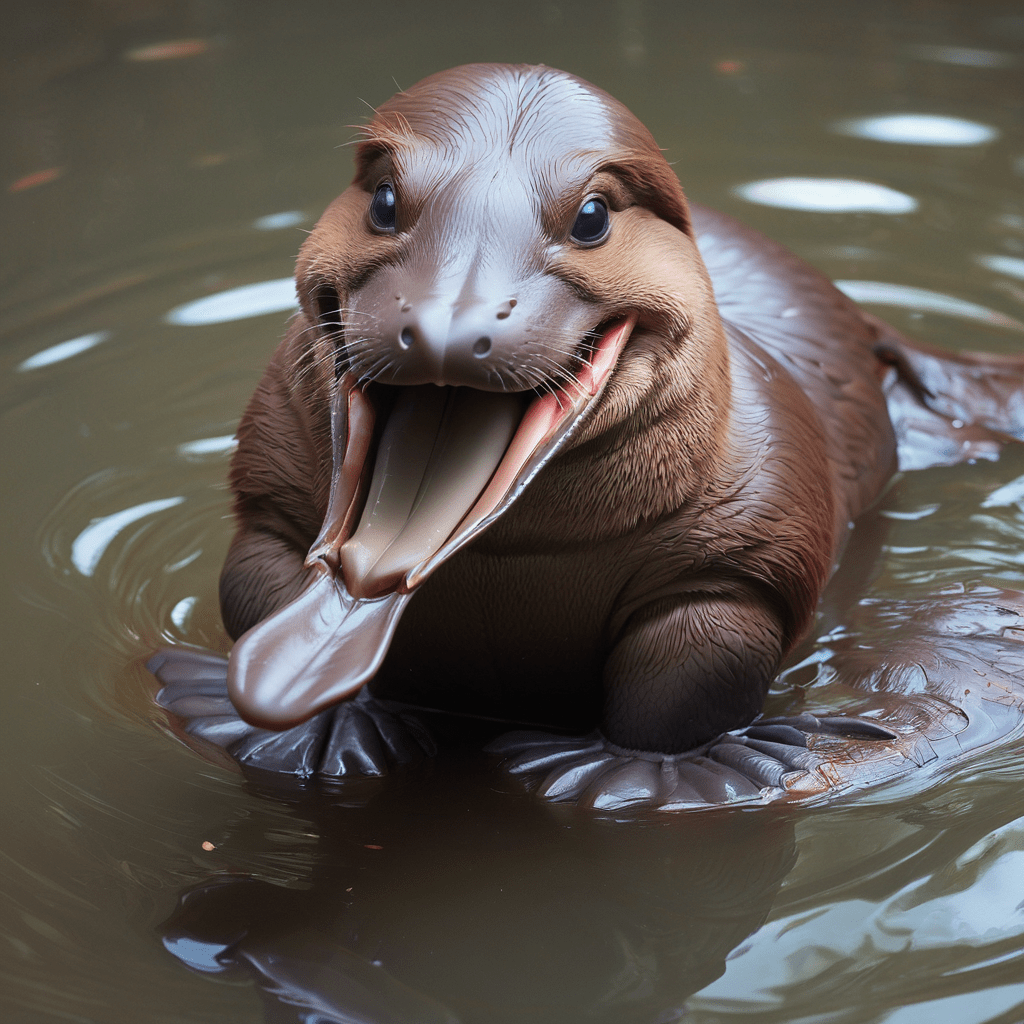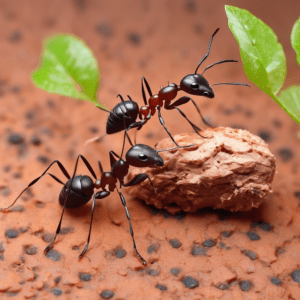Platypus as pets Platypuses are often misunderstood creatures, and one common misconception is that they cannot be kept as pets. However, contrary to popular belief, it is possible to have these fascinating monotremes as companions under the right circumstances.
In this blog post, we’ll delve into the intricacies of keeping platypus as pets, exploring everything from habitat setup to health care tips.
Understanding Platypus as Pets
Platypuses, with their unique appearance and intriguing behaviors, have captivated the curiosity of animal enthusiasts for centuries. While they may not be your typical household pet, they can indeed thrive in a captive environment with proper care and attention.
Before delving into the details of platypus care, it’s essential to understand the legalities and regulations surrounding their ownership.

Legalities and Regulations
Before considering a platypus as a pet, it’s crucial to familiarize yourself with the laws and regulations governing their ownership. In many regions, platypuses are protected species, and owning them may require special permits or licenses. It’s essential to research the specific regulations in your area and obtain any necessary permissions before acquiring a platypus.
Benefits and Challenges
Owning a platypus can be a rewarding experience, but it also comes with its unique set of challenges. One of the primary benefits of having a platypus as a pet is the opportunity to observe their fascinating behaviors up close. From their distinctive hunting techniques to their playful interactions, platypuses never fail to captivate their owners’ attention.
However, it’s essential to recognize the challenges associated with caring for these semi-aquatic creatures. Platypuses have specific habitat requirements and dietary needs that must be met to ensure their health and well-being.
Additionally, their nocturnal nature and solitary tendencies may not be suitable for all households, requiring careful consideration before bringing one into your home.
Creating the Perfect Habitat
Now that we’ve covered the legalities and potential challenges of owning a platypus as a pet, let’s dive into the exciting world of designing the perfect habitat for your new companion. Creating a suitable environment for your platypus is crucial for their health, happiness, and overall well-being.
Habitat Setup
Platypuses are semi-aquatic mammals, meaning they spend a significant amount of time both in water and on land.
As such, their habitat should mimic their natural environment as closely as possible. Start by selecting a spacious enclosure that provides ample room for swimming and exploring. A large aquarium or custom-built pond with shallow and deep areas is ideal for accommodating their aquatic lifestyle.
Environmental Considerations
When designing your platypus habitat, consider factors such as temperature, lighting, and substrate. Platypuses prefer cool, dimly lit environments, so maintaining a stable temperature between 60-80°F (15-27°C) and providing plenty of shaded areas is essential. Use natural materials like sand, gravel, and rocks to create a substrate that mimics their native riverbed habitat.
Water Quality and Filtration
High water quality is paramount to the health of your pet platypus. Invest in a reliable filtration system to keep the water clean and free of toxins. Regular water testing and maintenance are necessary to ensure optimal water conditions for your platypus. Additionally, provide hiding spots and aquatic plants to enrich their environment and offer opportunities for exploration.
Land Area and Shelter
While platypuses are excellent swimmers, they also require a dry, terrestrial area where they can rest and retreat when needed. Include a spacious land area within their enclosure, furnished with natural materials like logs, rocks, and vegetation. Provide shelters or nesting boxes where your platypus can feel safe and secure, mimicking the burrows they would create in the wild.
Enrichment and Stimulus
Platypuses are intelligent and curious animals that thrive on mental stimulation. Incorporate enrichment activities into their habitat, such as floating toys, puzzle feeders, and underwater tunnels. Rotate and vary these stimuli regularly to prevent boredom and encourage natural behaviors like foraging and exploration.
Feeding and Nutrition
Now that we’ve set up the perfect habitat for your pet platypus, it’s time to turn our attention to their dietary needs and nutrition. Providing a well-balanced diet is essential for ensuring your platypus remains healthy and thriving in captivity.
Dietary Requirements
Platypuses are carnivorous creatures with a diet primarily consisting of aquatic invertebrates such as insects, worms, and crustaceans. In captivity, it’s essential to replicate this natural diet as closely as possible to meet their nutritional needs. Offer a variety of live or frozen foods, including mealworms, shrimp, and freshwater snails, to ensure a diverse and balanced diet for your platypus.
Feeding Schedule
Establishing a regular feeding schedule is crucial for maintaining your platypus’s health and preventing overfeeding. Offer small, frequent meals throughout the day, simulating their natural feeding patterns in the wild. Monitor their appetite and adjust the amount and frequency of feedings accordingly to prevent obesity and digestive issues.

Supplements and Vitamin Enrichment
While a varied diet of live foods should provide most of the essential nutrients your platypus needs, it may be necessary to supplement their diet with vitamins and minerals occasionally. Consult with a veterinarian or exotic animal specialist to determine if additional supplementation is required based on your platypus’s individual needs and health status.
Water Quality and Hydration
Platypuses obtain a significant portion of their hydration from the foods they consume, but access to clean, fresh water is still essential for their overall well-being. Ensure your platypus has access to a shallow water dish or pool within their enclosure, kept clean and free of debris. Monitor water quality regularly and change it as needed to maintain optimal hygiene.
Observing Dietary Preferences
Like any animal, individual platypuses may have specific dietary preferences or aversions. Pay attention to their eating habits and adjust their diet accordingly to accommodate their preferences while still meeting their nutritional needs. Offering a variety of food options and observing their reactions can help you tailor their diet to suit their tastes.
By providing a nutritious and varied diet tailored to your platypus’s specific needs, you can ensure they remain healthy and happy in their captive environment. In the next section, we’ll explore the importance of health and wellness care for your pet platypus, including common health issues and preventive measures.
Health and Wellness
Ensuring the health and wellness of your pet platypus is paramount to providing them with a happy and fulfilling life in captivity. In this section, we’ll explore common health issues that may affect platypuses and discuss preventive measures to keep your pet in optimal condition.
Common Health Issues
While platypuses are generally hardy animals, they can still be susceptible to certain health issues, especially if their habitat or care requirements are not adequately met.
Common health concerns in pet platypuses may include respiratory infections, skin parasites, and injuries from environmental hazards. It’s essential to monitor your platypus closely for any signs of illness or distress and seek veterinary care promptly if needed.
Preventive Care Measures
Preventive care is key to maintaining your platypus’s health and preventing the onset of potential health problems. Ensure their habitat is kept clean and hygienic, with regular water changes and substrate maintenance. Monitor water quality parameters such as pH and ammonia levels to prevent waterborne illnesses.
Additionally, provide regular veterinary check-ups to detect any underlying health issues early on and address them proactively.
Environmental Considerations
Platypuses are highly sensitive to changes in their environment, so it’s essential to create a stable and stress-free living space for them. Avoid sudden changes in temperature or water quality, as these can stress your platypus and compromise their immune system.
Provide ample hiding spots and shelter within their habitat to allow them to retreat and feel secure when needed.
Behavioral Indicators
Understanding your platypus’s behavior can provide valuable insights into their overall health and well-being. Monitor their activity levels, appetite, and interactions with their environment for any signs of abnormal behavior. Changes in behavior, such as lethargy, loss of appetite, or excessive hiding, may indicate an underlying health issue that requires attention.
Emergency Preparedness
In addition to preventive care measures, it’s essential to be prepared for emergencies that may arise. Keep a well-stocked first aid kit specifically tailored to platypus care on hand, including supplies for wound cleaning and treatment.
Familiarize yourself with basic first aid techniques and know how to respond to common emergencies such as injuries or sudden illness.
By implementing these preventive care measures and staying vigilant about your platypus’s health and behavior, you can help ensure they enjoy a long and healthy life as your cherished companion. In the next section, we’ll explore the fascinating world of platypus behavior and training, offering insights into how to build a strong bond with your pet.
Behavior and Training
Understanding the behavior of your pet platypus is essential for building a strong bond and ensuring their well-being in captivity. In this section, we’ll explore the fascinating world of platypus behavior and discuss effective training techniques to enhance their quality of life.
Understanding Platypus Behavior
Platypuses are unique creatures with a blend of mammalian, avian, and reptilian characteristics, making their behavior both intriguing and complex. As semi-aquatic mammals, they exhibit a range of behaviors adapted to their aquatic lifestyle, including swimming, diving, and foraging for food. Additionally, platypuses are solitary animals and may
display territorial behaviors, particularly towards members of the same sex.

Building a Strong Bond
Developing a strong bond with your pet platypus is essential for their social and emotional well-being. Spend quality time interacting with them daily, offering enrichment activities and positive reinforcement. Platypuses are intelligent
animals capable of forming deep connections with their human caregivers, so be patient and consistent in your interactions to build trust and mutual respect.
Effective Training Techniques
While platypuses may not be as trainable as some other domesticated animals, they can still learn basic behaviors through positive reinforcement techniques.
Start with simple commands such as recall or target training, using treats or praise as rewards for desired behaviors. Keep training sessions short and enjoyable, and always end on a positive note to keep your platypus engaged and motivated.
Enrichment Activities
Providing enrichment activities is essential for keeping your pet platypus mentally stimulated and engaged. Offer a variety of toys, puzzles, and environmental stimuli to encourage natural behaviors like foraging and exploration. Rotate and vary these enrichment activities regularly to prevent boredom and ensure your platypus remains mentally and physically stimulated.
Understanding Individual Differences
Like any animal, each platypus has its own unique personality and preferences. Take the time to observe and understand your platypus’s individual behaviors and quirks, adapting your training and enrichment strategies to suit their needs. Be patient and flexible in your approach, allowing your platypus to express themselves in their own way.
By understanding and respecting your pet platypus’s behavior and individuality, you can foster a deep and meaningful bond that enriches both of your lives. In the next section, we’ll delve into the importance of socialization and enrichment for pet platypuses, offering insights into how to create a stimulating and fulfilling environment for your companion.
Socialization and Enrichment
Socialization and enrichment play crucial roles in the well-being and happiness of your pet platypus. In this section, we’ll explore the importance of socialization and provide tips for creating a stimulating and fulfilling environment for your platypus companion.
The Importance of Socialization
While platypuses are solitary animals by nature, they still benefit from positive interactions with humans and other
animals. Socialization helps prevent boredom and loneliness, promotes mental stimulation, and enhances your platypus’s overall quality of life. Introduce your platypus to new experiences, environments, and individuals gradually, always prioritizing their comfort and well-being.
Interactions with Humans
Spending quality time with your platypus through gentle handling, playtime, and positive reinforcement can strengthen your bond and foster trust. Engage in interactive activities such as gentle petting, offering treats, or engaging in play with appropriate toys. Respect your platypus’s boundaries and cues, allowing them to approach interactions at their own pace.
Interactions with Other Animals
While platypuses are primarily solitary animals, they may still benefit from supervised interactions with other compatible pets, such as certain species of fish or amphibians. Introduce new animals slowly and carefully, monitoring
their interactions closely for signs of stress or aggression. Provide ample hiding spots and escape routes to ensure all animals feel safe and secure during interactions.
Enrichment Activities
Enrichment activities are essential for keeping your pet platypus mentally and physically stimulated. Offer a variety of toys, puzzles, and environmental stimuli to encourage natural behaviors like foraging, exploring, and swimming. Rotate and vary these enrichment activities regularly to prevent boredom and ensure your platypus remains engaged and fulfilled.
Outdoor Enclosures and Exploration
If feasible, consider providing your platypus with access to an outdoor enclosure or supervised outdoor playtime in a safe and secure environment. Outdoor exploration allows your platypus to experience natural sunlight, fresh air, and a variety of sensory stimuli, promoting physical and mental well-being.
By prioritizing socialization and enrichment in your platypus’s daily routine, you can help ensure they lead a fulfilling and enriched life in captivity. In the next section, we’ll explore the fascinating world of platypus breeding and reproduction, offering insights into the reproductive behaviors of these unique creatures.
Breeding and Reproduction
Understanding the intricacies of platypus breeding and reproduction is essential for those considering breeding these unique creatures. In this section, we’ll explore the fascinating world of platypus reproduction, including their reproductive behaviors, breeding cycles, and responsible breeding practices.

Reproductive Behaviors
Platypuses exhibit fascinating reproductive behaviors that are adapted to their semi-aquatic lifestyle. Breeding typically
occurs during the Australian spring, between August and October, when male platypuses become more territorial and
vocal to attract mates. During courtship, males perform elaborate displays to impress females, including vocalizations, tail slapping, and underwater acrobatics.
Breeding Cycles
Female platypuses typically produce one clutch of eggs per breeding season, with litter sizes ranging from one to three eggs. After mating, the female constructs a burrow within the riverbank where she incubates her eggs for around ten
days before laying them in a nest of vegetation. The eggs are then incubated for approximately ten days until they
hatch into tiny, blind, and hairless young known as puggles.
Responsible Breeding Practices
Breeding platypuses in captivity requires careful consideration and adherence to responsible breeding practices. Before
attempting to breed platypuses, ensure that both the male and female are mature and in optimal health. Provide a suitable nesting environment within the enclosure, with ample nesting materials and privacy for the female to give birth and care for her offspring.
Conservation Considerations
While breeding platypuses in captivity can contribute to conservation efforts and species preservation, it’s essential to
prioritize the welfare and well-being of the animals above all else. Ensure that any breeding programs are conducted ethically and responsibly, with a focus on maintaining genetic diversity and preventing inbreeding. Consult with experienced breeders or conservation organizations for guidance on best practices for platypus breeding in captivity.
Breeding Challenges
Breeding platypuses in captivity can be challenging due to their complex reproductive biology and specific
environmental requirements. Factors such as diet, habitat conditions, and stress levels can impact breeding success rates. Patience, dedication, and careful monitoring are essential for overcoming these challenges and ensuring successful breeding outcomes.
By understanding the reproductive behaviors and requirements of platypuses, breeders can contribute to conservation
efforts while promoting the welfare of these fascinating creatures. In the next section, we’ll explore the legal and ethical considerations surrounding the ownership of platypuses as pets, providing guidance on navigating regulatory requirements and ethical considerations.
Legal and Ethical Considerations
Navigating the legal and ethical landscape surrounding the ownership of platypuses as pets is essential for responsible pet ownership. In this section, we’ll explore the laws and regulations governing the ownership of platypuses, as well as ethical considerations related to their care and conservation.
Laws and Regulations
Platypuses are protected species in many regions due to their unique biological characteristics and conservation
status. Before acquiring a platypus as a pet, it’s crucial to research and understand the laws and regulations governing
their ownership in your area. Some jurisdictions may require special permits or licenses to keep platypuses, while others
may prohibit private ownership altogether.
Ethical Considerations
Owning a platypus is a significant responsibility that comes with ethical considerations related to their welfare, conservation, and impact on wild populations. It’s essential to consider whether keeping a platypus as a pet is in the best interest of the animal and whether you can provide the necessary care and enrichment they require.
Additionally, prioritize supporting reputable breeders or conservation organizations that prioritize the welfare and
conservation of platypuses.
Conservation Efforts
Platypuses face numerous threats in the wild, including habitat loss, pollution, and climate change. Supporting conservation efforts aimed at protecting platypus habitats and preserving wild populations is crucial for their long-term survival.
Consider donating to reputable conservation organizations, participating in citizen science projects, or advocating for policies that promote platypus conservation.
Responsible Ownership
As a platypus owner, it’s essential to prioritize the welfare and well-being of your pet. Provide a spacious and enriching habitat that meets their physical and psychological needs, and seek regular veterinary care to ensure they remain healthy and happy. Educate yourself about platypus behavior, care requirements, and environmental needs to provide the best possible care for your pet.
Educational Outreach
Educating others about the importance of platypus conservation and responsible pet ownership is essential for fostering a culture of stewardship and respect for these unique creatures.
Share your knowledge and experiences with others, participate in outreach events, and advocate for policies that promote the welfare and conservation of platypuses and their habitats.
By understanding and adhering to the legal and ethical considerations surrounding the ownership of platypuses as
pets, you can ensure that your pet receives the care and respect they deserve while contributing to efforts to conserve
these fascinating creatures for future generations to enjoy. In the concluding section of this blog, we’ll recap key takeaways and offer final thoughts on the joys and responsibilities of owning platypuses as pets.

Conclusion
Embracing the Joys of Platypus Ownership
As we wrap up our journey into the world of platypus ownership, it’s essential to reflect on the valuable insights we’ve gained and the responsibilities we’ve embraced. In this concluding section, we’ll recap key takeaways and offer final thoughts on the joys and responsibilities of owning platypuses as pets.
Recap of Key Takeaways
Throughout this blog, we’ve explored the various aspects of platypus care, from setting up the perfect habitat to understanding their unique behaviors and nutritional needs. We’ve discussed the importance of socialization and enrichment, the intricacies of platypus breeding and reproduction, and the legal and ethical considerations surrounding their ownership.
Final Thoughts
Owning a platypus is a unique and rewarding experience that comes with its share of challenges and responsibilities. These fascinating creatures offer endless opportunities for observation, learning, and connection, enriching our lives in ways we never imagined.
However, it’s essential to approach platypus ownership with care, respect, and a commitment to their welfare and
conservation.
Call to Action
As we embark on our journey as platypus owners, let’s continue to prioritize the well-being of our pets and the preservation of their natural habitats. Let’s educate ourselves and others about the importance of responsible pet ownership and conservation efforts aimed at protecting platypuses and their ecosystems.
Stay Connected
Thank you for joining us on this adventure into the world of platypus ownership. We hope you’ve found this blog informative, inspiring, and entertaining. Stay connected with us for future updates, tips, and resources to help you provide the best possible care for your pet platypus.
Share Your Story
Do you have a unique or heartwarming story about your experiences with platypus ownership? We’d love to hear from you! Share your stories, photos, and tips with us and our community of platypus enthusiasts.












